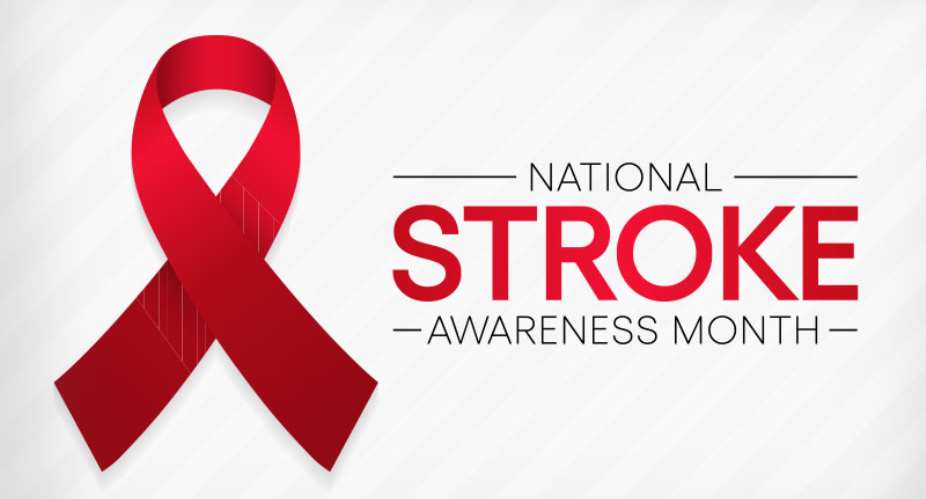Stroke is second leading cause of disability and death. It leads to economic hardships There are two main types:
1. Ischemic which involves a clot blocking blood supply to part of the brain
2. Hemorrhagic stroke which is caused by a burst or leaking blood 🩸 vessel in the brain. 3. A third type known as a TIA or mini stroke may present with stroke like symptoms but usually disappear within 24 hrs. It is caused by temporary clot to part of brain. It can lead to a full blown stroke later on if risk factors are not controlled.
Risk factors for Stroke
Previous stroke or Mini stroke (TIA), Atrial Fibrillation (A. Fib - Irregular heart beat and rate), Hypertension, Diabetes Mellitus, High Cholesterol, Coronary heart disease (blockage of arteries of the heart), Sickle cell disease, blood vessels malformations in the brain, use of oral birth control contraceptives, cocaine use, migraines and stress at work.
How to Prevent a first ischemic stroke (lack of blood supply due to a clot)
- • All the risk factors listed above need to be controlled if present
- • Hypertension, Diabetes and Cholesterol need to be controlled with medications, diet and exercise, and weight loss
- • Cessation of smoking. All types of nicotine
- • Those with Atrial Fibrillation (A. Fib) need a blood thinner to prevent blood clots forming in the heart.
- • For those who have had a previous Mini Stroke tests like blood work, brain scans, ultrasound of the heart and carotid (neck area artery), electrocardiogram (looks at the electrical functioning of the heart and detects A. Fib) and other tests to identify risk factors leading to the mini stroke and treat them, otherwise the individual may end up with a full blown stroke very soon.
Post Stroke Care
After the initial treatment at a hospital, Post stroke care is needed to minimize the long term complications associated with stroke. To address paralysis, speech, mobility, swallowing, vision, memory loss, depression, anxiety, anger, frustration, many health care professions may have to be involved. Examples: Physical and Speech Therapists, Occupational Therapist, Neurologist, Dietitians, and the Primary Care Doctor.
To prevent a second stroke the individual will need to be on a blood thinner to prevent more clots from forming, and all the risk factors above have to be well controlled. It may take frequent intensive therapy to gain full use of the arm or leg of affected.
Those who suffer from depression, anger, anxiety or frustration may need to go on antidepressant or anxiety medication.
In conclusion, I would like to emphasis that each one of us, has to take charge of our OWN health. That means we need to make sure our BP, Blood sugar and Cholesterol are all in the normal ranges. Regular exercise, weight loss and healthy diet are all part of keeping these important numbers in control.
Let us keep stroke at bay, take charge of your health.
READ AND SHARE
Dr. Barbara Entsuah MD (Family Medicine Specialist, Author, Speaker)
Latest Book: A Woman’s Guide to her Body and her total Health. (Get your copy)
Website: www.BarbaraEntsuah.com
#Loveyourbody ❤️❤️❤️





 Ejisu by-election: Aduomi warns NPP against voter intimidation
Ejisu by-election: Aduomi warns NPP against voter intimidation
 High Court orders implicated four NDA officials to present defence
High Court orders implicated four NDA officials to present defence
 Let’s all be matured, patriotic to have a peaceful election this year – Dampare ...
Let’s all be matured, patriotic to have a peaceful election this year – Dampare ...
 Mahama's administration saw thievery that knew no bounds; stole from market wome...
Mahama's administration saw thievery that knew no bounds; stole from market wome...
 GRA/SML deal: Always read the stories behind the headlines or you'd look stupid ...
GRA/SML deal: Always read the stories behind the headlines or you'd look stupid ...
 GRA/SML Contract: It takes some 'wild' boldness for a president to make this dec...
GRA/SML Contract: It takes some 'wild' boldness for a president to make this dec...
 Elisu By-election: "If you call yourself a man, boo Chairman Wontumi again" — Bo...
Elisu By-election: "If you call yourself a man, boo Chairman Wontumi again" — Bo...
 Fuel tanker driver escapes with his life after tanker goes up in flames near Suh...
Fuel tanker driver escapes with his life after tanker goes up in flames near Suh...
 Uniform change: ‘Blue and white are brighter colours’ — Kwasi Kwarteng explains ...
Uniform change: ‘Blue and white are brighter colours’ — Kwasi Kwarteng explains ...
 MoE not changing all public basic school uniforms but only newly built ones — Kw...
MoE not changing all public basic school uniforms but only newly built ones — Kw...
